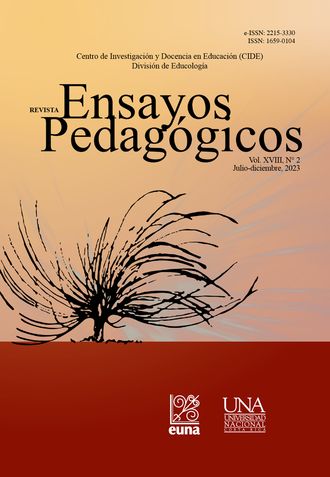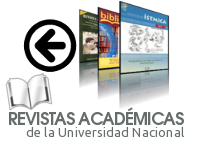The Importance of Considering the Different Learning Styles in Students of English as a Foreign Language
DOI:
https://doi.org/10.15359/rep.18-2.16Palabras clave:
adaptations, English as a Foreign Language, implementation, learning styles, students' needsResumen
This paper aims to consider the importance of implementing different learning styles with learners of English as a Foreign Language (EFL). In addition, information is provided on the existence of these learning styles as well as the importance of teachers’ implementation of them. Various academic articles were reviewed and compared to highlight the transcendence of the use of learning styles to favor the EFL teaching and learning process. In addition, some examples of activities that can be developed to promote them are suggested.
Referencias
Burns , J. (2016). Do Learning Styles Exist? Michigan State University College of Education. https://education.msu.edu/green-and-write/2016/do-learning-styles-exist/
Clapman, L. (2020). Learning to interview builds a range of communication skills. Edutopia. https://www.edutopia.org/article/learning-interview-builds-range-communication-skills
Chick, N. (2016). Learning styles. Vanderbilt University Center for Teaching. https://cft.vanderbilt.edu/guides-sub-pages/learning-styles-preferences/
Eberly Center. (2022). How to assess students’ prior knowledge. Carnegie Mellon University. https://www.cmu.edu/teaching/assessment/priorknowledge/index.html
Feldman, J., Monteserin, A., & Amandi, A. (2015). Automatic detection of learning styles: state of the art. Artificial Intelligence Review, 44, 157-186. https://doi.org/10.1007/s10462-014-9422-6
Ferrell, C. (2018). What is the most used learning style in the elementary school classroom; The Impacts of Teaching Different Learning Styles in the Classroom? https://www.csustan.edu/sites/default/files/groups/McNair%20Scholars%20Program/20192020Journals/ferrell_cassidy_f.pdf
Tools for Teachers. (2016). Curriculum modifications & adaptations. https://njcdd.org/wp-content/uploads/2016/08/tools-teacherspart2.pdf
Gosse, C., & Hansel, L. (2014, Summer). Taken for Granted: Why Curriculum Content Is Like Oxygen. American Educator, 19-43. https://files.eric.ed.gov/fulltext/EJ1043407.pdf
Gudnason, J. (2017). Learning Styles in Education: A Critique. BU Journal of Graduate Studies in Education, 9(2), 19-23. https://files.eric.ed.gov/fulltext/EJ1230420.pdf
Hu, J., Peng, Y., Chen, X., & Yu, H. (2021). Differentiating the learning styles of college students in different disciplines in a college English blended learning setting. PloS one, 16(5), e0251545. https://journals.plos.org/plosone/article?id=10.1371/journal.pone.0251545
Klimova, B. F.. (2012). The importance of writing. Paripex - Indian Journal of Research, 2, 9-11. https://www.researchgate.net/publication/274925223_The_Importance_of_Writing
Mumaraki, J., Kisilu, A., & Kirui, E. (2018). Learner attributes influencing instruction in mathematics curriculum in public primary schools of Bungoma South Sub-County, Bungoma County, Kenya. International Academic Journal of Social Sciences and Education, 2(1), 102-122. https://www.iajournals.org/articles/iajsse_v2_i1_102_122.pdf
Mohssine, B., Mohammed, A., Abdelwahed, N., & Mohammed, T. (2021). Adaptive Help System Based on Learners ‘Digital Traces’ and Learning Styles. International Journal of Emerging Technologies in Learning (iJET), 16(10), 288-294. https://www.learntechlib.org/p/220090/
Moussa, N. (2014, Fall). The importance of learning styles in education. Institute for Learning Styles Journal, 1, 19-27. https://www.auburn.edu/academic/cla/ilsrj//Journal%20Volumes/Fall%202014%20Vol%201%20PDFs/Learning%20Styles%20Nahla%20Moussa.pdf
Newton, P., & Salvi, A. (2020). How common is belief in the learning styles neuromyth, and does it matter? A pragmatic systematic review. Frontiers in Education, 5, 1-14. https://doi.org/10.3389/feduc.2020.602451
Pashler, H., McDaniel, M., Rohrer, D., & Bjork, R. (2008). Learning styles: Concepts and evidence. Psychological Science in the Public Interest, 9(3), 105-119. https://www.researchgate.net/profile/Robert-Bjork-2/publication/233600402_Learning_Styl
Snider, A., & Director, L. (2011). Debate: Important for everyone. University of Vermont, Vermont, USA.
Sofian, R. F., & Anggraeni, A. (2021). An analysis the use of visual media in teaching English to young learners. Project (Professional Journal of English Education), 4(4), 622-627. https://journal.ikipsiliwangi.ac.id/index.php/project/article/view/4283
Sowell, J. (2017). Good Instruction-Giving in the Second-Language Classroom. English Teaching Forum, 55(3), 10-19). https://americanenglish.state.gov/files/ae/resource_files/etf_55_3_pg10-19.pdf
Supangat, M., & Zainuri, B. S. (2020). Development of E-learning System Using Felder and Silverman’s Index of Learning Styles Model. International Journal of Advanced Trends in Computer Science and Engineering, 9(5), 8554-8561. https://doi.org/10.30534/ijatcse/2020/236952020
Swanson, L. (1995). Learning Styles: A Review of the Literature (ED387067). ERIC. https://files.eric.ed.gov/fulltext/ED387067.pdf
Publicado
Cómo citar
Número
Sección
Licencia
Derechos de autor 2024 Revista Ensayos Pedagógicos

Esta obra está bajo una licencia internacional Creative Commons Atribución-NoComercial-SinDerivadas 4.0.
La Revista Ensayos Pedagógicos está suscrita a la Licencia Creative Commons Atribución-NoComercial-SinDerivadas 4.0 Internacional, lo cual implica la posibilidad de que tanto las personas autoras como las personas lectoras puedan, de forma gratuita, descargar, almacenar, copiar y distribuir la versión final aprobada y publicada (post print) del artículo, siempre y cuando se realice sin fines comerciales, no se generen obras derivadas y se mencione la fuente y autoría de la obra. Asimismo, la Revista Ensayos Pedagógicos declara que toda persona autora conservará a perpetuidad los derechos de autoría de su ensayo o artículo.









